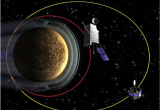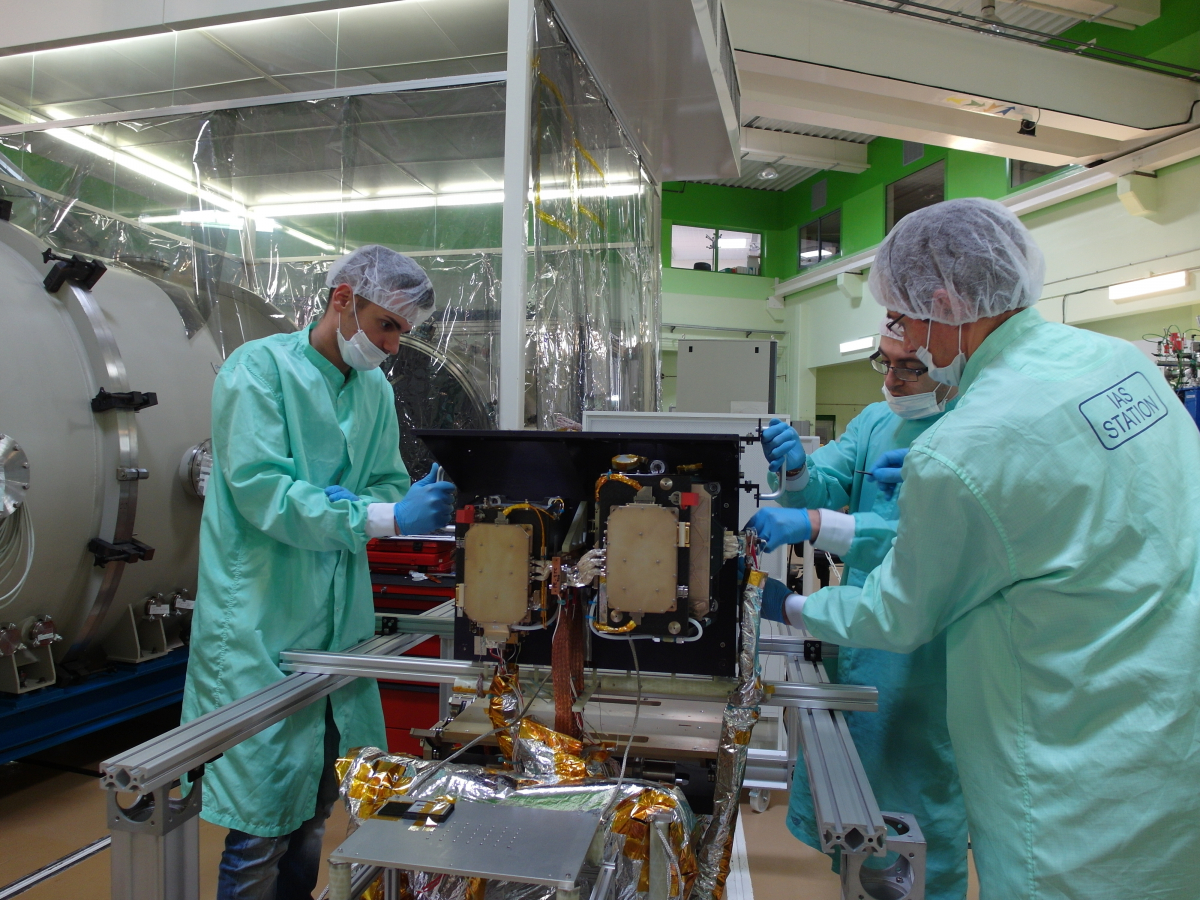Bepicolombo/SIMBIO-SYS

The BepiColombo mission was launched on October 19, 2018 for an arrival at Mercury in 2026. This ambitious mission will study all aspects of the closest planet to the sun, from interior to surface to magnetosphere. More details on the launch here.
Contacts : Yves Langevin, François Poulet, Mathieu Vincendon
BepiColombo is composed of two independent probes that will orbit planet Mercury:
- MMO (Mercury Magnetospheric Orbiter) will study Mercury Magnetosphere. MMO is a JAXA spacecraft that will be placed on an elliptical orbit ranging from 400 km to more than 10 000 km so as to study magnetic field and upper atmosphere.
- MPO (Mercury Planetary Orbiter) is an ESA spacecraft that will probe surface and interior from an altitude varying between 400 and 1500 km. MPO is composed of 11 instruments, including SIMBIO-SYS, a set of imaging instruments dedicated to Mercury surface studies. IAS contributed to the development of SIMBIO-SYS.
The SYMBIO-SYS instrument
SIMBIO-SYS will map various surface properties of Mercury (geology, composition, topography…). It contains 3 instruments:
- HRIC, a High Spatial Resolution Imaging Channel that will characterize at high spatial sampling (down to 5 meters) the geology of the surface.
- STC (STereo Channel), a stereoscopic imaging channel that will map the whole planet in relief at a 50 m / pixel.
- VIHI, a Visible Infrared Hyperspectral Imager that will obtain images of the planet in more than 250 spectral wavelengths. This spectral information will be used to identify the composition of the surface.
IAS contribution
SIMBIO-SYS has been designed by an Italian-French consortium with an Italian main scientific lead (PI : Gabriele Cremonese). IAS was in charge of the development of the electronic module and the onboard software (co-PI level responsibility, assumed by Yves Langevin), and the radiometric and optical calibration at system level, under the lead of François Poulet. IAS participation to SIMBIO-SYS interplanetary and then orbital flight operations will be coordinated by Mathieu Vincendon (scientific activities) and Vincent Carlier (technical activities).
The electronic module of the set of three instruments SIMIBIO-SYS, designed by IAS.
IAS achieves the cross calibration of the three channels of SIMBIO-SYS during spring 2015.




